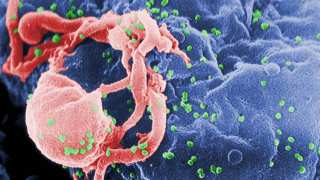With the plentitude of allergens in the air we breathe, the things we touch and the food we eat, it comes as no surprise that allergies are the 6th leading cause of chronic illness in the United States.
Though it can range from mild to severe in individuals, there is no cure for this condition, only the management of its symptoms by medications.
At Denmark’s Aarhus University, scientists from the Department of Engineering and Molecular Biology and Genetics, along with German researchers, have discovered a unique antibody-based treatment option that could help in combating allergies and asthma. The paper was published in Nature Communications.
What Happens During An Allergic Reaction?
The immune system produces antibodies called immunoglobulin E (IgE), in response to foreign particles or allergens. These molecules travel in the blood until they trigger the histamine-producing cells in the connective tissue. This essentially creates an allergic reaction that shows as symptoms, including a runny nose, hives and itchy skin.
Every individual possesses specific types of IgE antibodies that makes them allergic to certain allergens. This is why some people cannot tolerate the presence of pollen in the air, while others can. Although the exact reason for this selectivity is unknown, it has been proven that family history could play a role.
Antibody-Treatment Approach
While trying to study and improve upon the treatment for allergies, the team of Danish and German investigators identified a specific antibody that could tackle the process of allergic reactions. Specifically, they determined its function as one that interferes with IgE binding to its two receptors, FcεRI and CD23, thus, not allowing the allergen molecules to bind.
Apart from this, the antibody also eliminates the IgE on immune cells and once that happens, even if the body continues to generate more IgE molecules, no allergic reactions can be triggered.
Prof. Edzard Spillner of Aarhus University’s Department of Engineering said, “We can now describe the interaction of this antibody with its target and the conformational changes very accurately. This allows us to understand how it interferes with the IgE and its specific receptors on the immune cells of the body, which are responsible for releasing histamine in an allergic reaction.”
An ex vivo experiment was conducted where patients allergic to birch pollen and insect venom were tested. It was seen that this antibody ‘anti-IgE’ was able inhibit the complex interaction between the allergens and immune cells.
This groundbreaking development can influence novel methods of treatments for allergies in the future, especially due to its smaller size and effectiveness compared to existing therapeutic antibodies. Nick Laursen of the University’s Department of Molecular Biology and Genetics talked about the application of this research by saying, “We can now precisely map how the antibody prevents binding of IgE to its receptors. This allows us to envision completely new strategies for engineering medicine of the future.”
The newly discovered immunoglobulin is a single-domain antibody — a fragment of the whole antibody but possessing all its properties — is said to be extremely stable and easily administrable. But clinical trials need to validate its safety for humans before it can be released in the market as a medication option.
Top image: Researchers have discovered a new approach for antibody-based treatment of allergy and asthma. It is nothing less than a breakthrough that could have a major impact on development of new medicine in years to come. The Photo shows Edzard Spillner (Photo: Lars Kruse)
References:
Asthma and Allergy Foundation of America, http://www.aafa.org/page/allergy-facts.aspx, (accessed 9 Feb 2018)
American Academy of Allergy, Asthma & Immunology, https://www.aaaai.org/conditions-and-treatments/library/at-a-glance/allergic-reactions, (accessed 9 Feb 2018)
Harel, K. (2018), Aarhus University: AU Engineering, http://ingenioer.au.dk/en/current/news/view/artikel/new-research-can-put-an-end-to-allergic-reactions/, (accessed 12 Feb 2018)
Aarhus University (2018), https://www.sciencedaily.com/releases/2018/01/180125101321.htm, (accessed 12 Feb 2018)
Jabs, F. et al. (2018), ‘Trapping IgE in a closed conformation by mimicking CD23 binding prevents and disrupts FcεRI interaction’, Nature Communications, 9







No comment